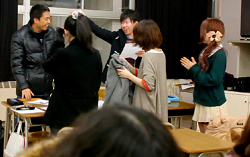Thorndike’s connectionism
Edward L Thorndike saw learners as empty and passive organisms that randomly responded to external events. Thorndike proposed an S-R theory called connectionism, which held that learning results from forming connections between a stimulus (S) and a response (R), which are manifest through behavior [2]. Thorndike proposed three laws governing learning, the Law of Effect, the Law of Readiness, and the Law of Exercise [4, 1, 2], as follows:
- The Law of Effect states that S-R learning is strengthened by satisfactory results and weakened by unsatisfactory results. Rewarded behavior is learned and becomes a habit, while punished behavior is not learned.
- The Law of Readiness states that learning is enhanced when the organism is ready for the connection and inhibited when the organism is not prepared. For example, a developmentally ready child finds reward in learning the task. In comparison, the child who is not prepared finds that attempting to learn the task is a punishing waste of time.
- The Law of Exercise holds that repeating meaningful connections strengthens learning while discontinuing connections will weaken learning. For example, the more frequently Susan practices a dance, the better she will learn the dance. Likewise, Susan will start to forget the dance when she stops practicing; the longer she goes without dancing, the more she forgets.
Thorndike and other theorists revised connectionism. Pavlov added to Thorndike’s basic S-R notion reinforcement, conditioned, stimulus, and extinction. Guthrie would propose that contiguity is the only law necessary for understanding learning. Skinner would introduce operant conditioning to show how learning is a consequence of behavior [4].
Research ultimately did not support Thorndike’s laws [2]. However, connectionism laid the foundation for behaviorism. Classroom applications of Thorndike’s theory focused on two key areas [17]:
- Form good habits in learners.
- Introduce skills only when the learner is ready, is conscious of the need for the skill, and when prior and subsequent learning reinforces the skill.




